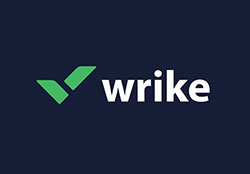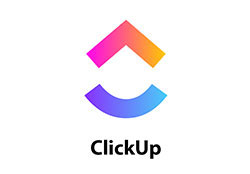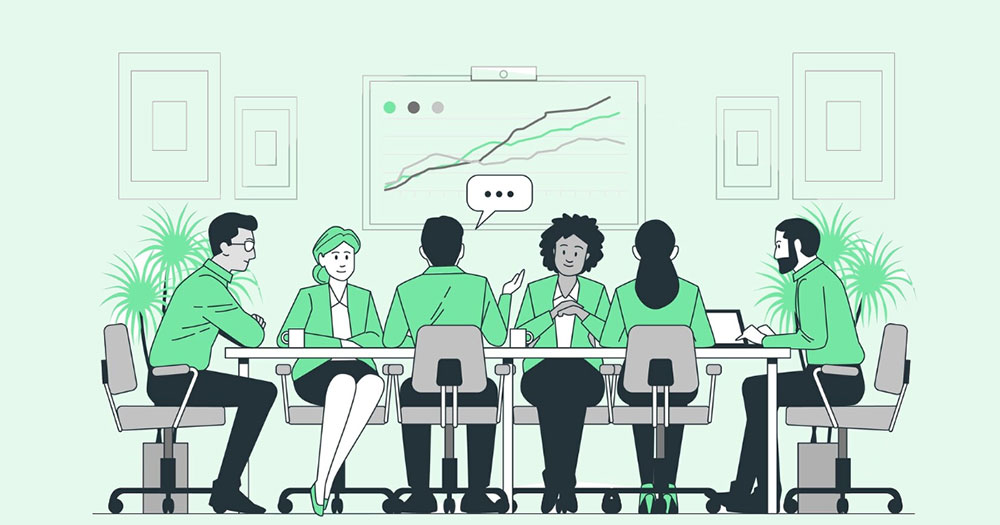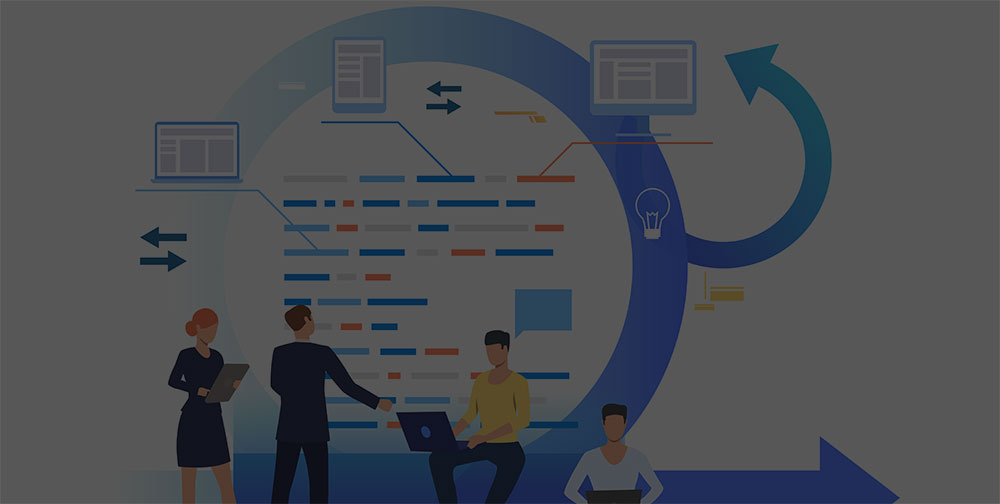Picture this: an orchestral web of creativity and logic, all meticulously interlaced. That’s the essence of what we’re diving into today – innovation frameworks. They’re not just the backbone of fresh ideas; they’re the scaffolding for turning those brainwaves into realities that spark change, disrupt markets, and maybe even alter the world.
Nestled within the realms of design thinking and agile methodologies lies a treasure trove brimming with potential.
Each framework is a stepping stone through the ideation process, transforming a fledgling concept into a tangible masterpiece.
Like a maestro conducting a symphony, knowing how to wield these frameworks is pivotal to not merely surviving but thriving in an ever-competitive digital landscape.
By the close of this read, you’ll have the lowdown on deploying such strategies as the lean startup or agile methodology with flair.
From recognizing when cross-functional teams enhance collaboration in innovation, to deciphering how a robust innovation strategy sets trailblazers apart, this article is your front-row ticket to the crème de la crème of innovation excellence.
Get set to unveil:
- How innovation models streamline the creative process.
- The role of innovation ecosystems in fostering cutting-edge ideas.
- Decoding the secret recipe of successful innovation management.
- Measurement: the innovation metrics that matter.
- Real-world applications that illustrate the transformative power of these frameworks.
Lock in. It’s showtime.
Key takeaways
- Innovation frameworks are vital for businesses to maintain a competitive advantage and should be flexible to adapt to new markets and customer bases. These frameworks guide businesses in channeling innovation and managing their portfolio effectively.
- An innovation framework isn’t just a profit model; it’s a structure that supports continuous improvement and the development of new technologies and R&D. It’s used to evaluate performance and inform business decisions, with risks carefully calculated.
- Doblin’s model groups innovation into ten types, categorized into offering, configuration, and experience. This model highlights the importance of understanding mutual elements and the innovation culture of successful companies like Lego, Microsoft, and Google.
- The configuration group focuses on a company’s internal structure and culture, emphasizing the importance of ideation, design thinking, and network innovation. It advocates for an organizational scheme that encourages intrapreneurship and agile approaches to adapt quickly to changes.
Innovation Frameworks – A Definition
While everyone aims to develop a profit model, an innovation strategy is not just that. In broad terms, it’s about paving the way for continuous improvement and iterative development. Hence, the innovation framework is the overall structure behind new technologies and R&D.
There are many real-life examples of well-envisioned innovation efforts. For example, the W. Chin Kim, R. Mauborgne, and McKinsey innovation frameworks, which can be likened to the Stage-gate process or TRIZ methodologies.
Of course, those ideas kept on evolving into their modern versions. Nowadays, people rely on the ten types of innovation frameworks, like the Blue Ocean Strategy, which emphasizes creating value proposition design and uncontested market space.
In short, brands use such metrics to maximize their performance. They weigh those principles against any potential business decision. This includes inspecting the pros and cons, innovation audit, and carefully taking calculated risks.
The Ten Types of Innovation Frameworks
Almost three decades ago, the consulting agency Doblin began grouping the types of innovation.
To do so, they started by focusing on their mutual elements and innovation culture. However, this study spanned 2,000 noteworthy cases, including crowdsourcing insights.
As exemplary successes, Doblin considered brands like Lego, Microsoft, and Google, which have shown intrapreneurship and scalability.
Other types of leading innovations came from Ford, Amazon, McDonald’s, etc., which have leveraged ecosystem innovation and co-creation.
Upon closely comparing their stories, the agency distilled the ten basic concepts of innovation.
Next, they tagged them into three groups: offering, configuration, and experience, emphasizing the importance of customer journey mapping and service innovation.
The Mutual Secrets of Successful Innovators
Group 1 – Configuration
These qualities focus on the brand’s internal structure and innovation culture. Most of the time, the starting point, often influenced by ideation and design thinking, decides the end result of a given campaign.
The type of profit model
While not all organizations strive for profit, innovation is not a free process. Hence, even for a non-profit brand, the product should at least cover the warm-up costs. In that way, the goal is to make something that will generate value and align with the value proposition design.
In other words, the Profit Model relegates how to increase revenue and sales. However, it doesn’t focus on the ongoing cash flow or innovation metrics. Instead, the model centers around creating new innovation funnel and revenue streams.
Internal networking structure
Each moving cog should be in the right place in an effective company. Even with remote work, the teams should always stay in touch. In today’s online world, data should flow correctly and in both directions, emphasizing the importance of user-centered design.
Hence, network innovation focuses on internal communication channels and open innovation. To that end, companies look to their peers for useful solutions, crowdsourcing ideas, and borrow new tech. The right setup can give you a hefty head start and further ensure efficacy. Risk sharing is another added bonus of joint innovation and co-creation.
Organizational scheme
In essence, companies utilize their tangible and intangible assets to reach a daily goal. This refers to the brand’s resources, capabilities, IPs, etc. Thus allocating them correctly, considering innovation management, is an ongoing struggle.
A practical solution is to have proper employee/employer channels, fostering intrapreneurship. That way, any part of any team can reach out to share ideas and opinions. If the system goes silent, then that is a very bad sign, indicating a lack of innovation culture.
Companies should always think of new ways to refresh this structure. For example, they can give more space and autonomy to one team for a certain period, leveraging agile methodology. At any rate, they should aim for a linear chain of command to always stay at the ready. In that way, they can quickly change courses, or pivot, if external forces demand it.
Internal process innovation
Companies support new innovations by funding resources for a project, emphasizing R&D. Hence, most internal processes are alike, though that doesn’t make them any less important. In fact, brands often suffer due to sticking to the norm when they shouldn’t have, missing out on disruptive innovation opportunities.
Updating those methods at the right joints can save both time and money. At the same time, figuring out what needs replacing can show the best way to scale. After all, most leading brands, like those practicing Blue Ocean Strategy, do things in their own way, leaving others to follow. So, taking cues from their books can grant you some competitive advantage.
Group 2 – Offering
This term covers all of the products/services a brand focuses on providing, encompassing value proposition design and innovation funnel.
The overall product performance
Generally, all R&D teams deal with product performance innovation, emphasizing rapid prototyping and user-centered design. In that sense, they keep on finding new ways to conquer the market. This includes both new disruptive innovations and altering the existing ones.
Sometimes, even something like a price cut can do wonders for that fiscal period. Yet, there are many more ways to enhance a product. Aspects like safety, accessibility, and comfort while using are common focal points, aligning with service innovation.
Types of product system innovation
If the product’s high asking price proves to be the issue, the brand can repurpose it. For example, they can try combining it with another popular offering, leveraging co-creation. That way, they can find that sweet spot and boost both items’ performance in the process.
In short, product system innovation looks for ways to add more value to an existing asset. To that end, brands tend to bundle their products or integrate them. Crafting plug-ins, extensions, and innovation frameworks are other popular choices.
Group 3 – Experience
This group of aspects refers to the customer engagement level, emphasizing customer journey mapping. This is where integrating a CRM can provide valuable insights to the business. Aside from feedback, it inspects the customer experience with the product as well.
Service innovations
The way you approach and treat your customer is another decisive factor. With proper customer service, the user can fully utilize the product and develop a habit of using it. At the same time, they’re far more likely to recommend it to others, fostering open innovation. All of that will incite your company’s growth and innovation culture.
Channel innovation
Establishing your brand demand by placing one brick at a time requires a robust innovation strategy. For that, you’ll need the proper customer relations channels.
Aside from stores, there are many more types of direct-to-consumer models. For example, eCommerce and dropshipping. Hence, digital marketing goes hand-in-hand with a thriving business image and Blue Ocean Strategy.
While it depends on your niche, connecting with your audience demands research and ideation. In short, it’s about identifying their daily struggles and providing a solution.
Thus, leading innovators always work on new ways to set such customer channels, emphasizing ecosystem innovation.
Some modern examples of this are the popular home delivery and omnichannel models. Also, the on-demand and pop-up stores continue to avert attention too.
These are all very new commercial types, meaning the market is ever-growing and always subject to radical innovation.
Are you looking for a great project management app?
Here are our recommendations:
Brand innovation
What you project on the market is how users will remember your brand. So, you can build a presence that many will associate with honesty, quality, and value proposition design.
Brand innovation aims to improve that aspect, increase brand awareness, and foster innovation culture.
As is the case with other focus points, knowing your audience and utilizing customer journey mapping is key.
Once you feel the pulse of the market, you can proceed to better shape your identity. Brands achieve this via logo design, ads, campaigns, etc., all while leveraging design thinking. Still, the market is always hungry for a disruptive and novel approach.
This ties in with the importance of authority and innovation management. Pros like transparency and certifications require you to play the long game. At the same time, the team should work on earning positive user feedback, creating good word of mouth, and fostering open innovation.
Customer engagement innovation
Even new businesses can earn the ‘trustworthy’ badge if they are loyal to their customer base, emphasizing user-centered design.
To that end, they should waste no time presenting their values. In today’s online world, finding new ways to do so, like ideation, is a challenge in disguise.
However, simply placing the product is not the sole purpose of this. Instead, such channels should work both ways, fostering co-creation, so you can get useful feedback before long. Next, you can further strengthen the bond and adapt to their innovation frameworks.
McKinsey’s Three Horizons Framework
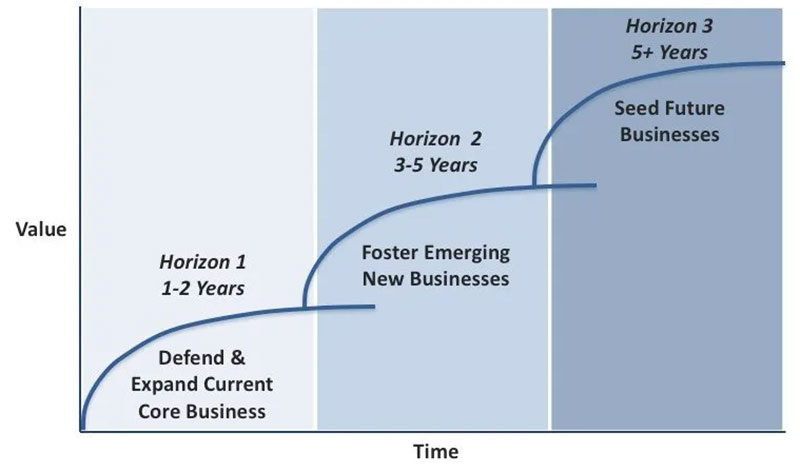
The Three Horizons of Innovation method focuses on future performance and innovation strategy. At its core, it’s about setting the grounds for easy lead generation and innovation funnel. Thus, the first horizon is about managing daily affairs and allocating resources, emphasizing R&D.
On this note, this doctrine founds that too many brands spend too much on this, neglecting scalability.
Then, they can’t focus on preparations for moving forward. To avoid this pitfall, Eric Schmidt (one of Google’s CEOs) suggests a 70-20-10 split between the horizons, leveraging agile methodology.
The trick is to work on all three fields in conjunction. Making ongoing tasks within each horizon, considering innovation metrics, is a practical solution. Further categorization sheds even more light on how the path toward optimal growth. In that way, each initiative will have a suitable space to shine and adapt to innovation culture.
What Goes in the First Horizon
Your currently available products populate the first horizon. At this stage, you can focus on how to fine-tune or upgrade your services, leveraging rapid prototyping.
The goal of this task is to recognize where your strengths lie, considering innovation audit, and then press further.
The Organic Growth Goals of the Second Horizon
Some halts in progress happen due to a slight oversight or lack of innovation audit. After figuring out the missing link, companies can resume the process, leveraging design thinking.
The second horizon is equal parts about creating new technologies and fostering open innovation as well. It can even point to solid openings for new investments and innovation portfolio expansion.
The Out-of-the-Box Solutions of the Third Horizon
The last group is about branching out in completely new directions, emphasizing disruptive innovation. This may even include steps like (carefully) venturing into a different niche. Yet, if you can work on two parallel fronts, leveraging agile methodology, you can profit from two venues later on.
Such daring solutions require proper funding, R&D, and access to the latest tech. At the same time, the third horizon can point to a possible new solution that you can invent. In that way, this method makes a full circle around business model innovations and innovation frameworks.
The Blue Ocean Strategy
This book is amazing. You can buy it from Amazon.
The Blue Ocean framework excels at finding new fertile grounds for a business, emphasizing value proposition design.
This profit model-centered method labels all thriving industries as “red oceans.” As such, they’re closed off to new ideas due to the set-in-stone rules, lacking innovation culture. Hence, there’s not much usable space in a red ocean.
So, everything outside those boundaries is a “blue ocean.” This umbrella term houses all potential markets where brands can put out new ideas and foster ideation.
What this means is that companies should create products for new audiences, emphasizing user-centered design. In other words, to give people something they didn’t know they wanted.
Breaking such new grounds is a guarantee for profit. It means you’ll enter a market where only you are the provider (at least at first), leveraging ecosystem innovation. Hence, you’ll secure a hefty market share and be able to preserve that position with ease, considering innovation management.
The practical appliance of this agenda often relies on a brand’s past successes and innovation metrics. Yet, following it may lead to a creative new solution and one-upping your competitors. Also, it might direct you to find the right place for your products and services, emphasizing service innovation.
The Innovative Ally vs. Acquire Framework
This abbreviation refers to alliances and acquisitions, emphasizing co-creation. Undertaking either may be the next pivotal step forward. Both are external resources sources that should pay for themselves, though, considering innovation portfolio.
On the flip side, grasping value in this manner is far from a sure shot.
First of all, the buyer company should know exactly what they hope to get, leveraging innovation audit. Those projections often span several years. Then, they should weigh the immediate costs and how they will impact them, considering innovation metrics.
Sometimes, the race is at an apex, and companies must take risks, emphasizing scalability. That means acquiring another firm to block your competitor’s access. So, while not immediate, the end result of that move might indeed be positive, leveraging pivot strategies.
The exact outcome will be very hard to pinpoint in most cases. Still, a detailed analysis of your customers’ habits, emphasizing customer journey mapping, will be useful.
The Buyout Route
To acquire another company, you must purchase more than 50% of its shares. Then, you can take the reins and freely allocate their resources. However, it also comes with a 30% premium cost. Before you make up for it, you won’t have access to any of the profit made.
Therefore, acquisitions can be double-edged swords. Almost always, they lead to a slight financial loss at first. Thus, you need to calculate those expenses beforehand.
The current management team of that company is another factor to consider. For example, you might lack the manpower to replace their positions right away. In such a case, allying with them might be the safer bet.
Entering a Partnership
To ensure their future standings and innovation strategy, two or more brands can join forces, leveraging co-creation. With that act, they also reduce the competition on the field. Granted, their goals need to be compatible, so they can pursue them together, emphasizing open innovation. That also includes sharing their resources, tech, and innovation funnel.
Such opportunities, fostering ecosystem innovation, are rare, though. Also, the negotiation period tends to stretch, leaving both teams with even more data to analyze. Even when they reach the formal agreement stage, the phases are still incomplete. Each point is subject to critical close-ups and demands for rewrites, emphasizing innovation audit.
Yet, if they do shake hands, both brands gain a strong foundation to continue growing. From that point on, they’ll enter the market as a single entity, leveraging Blue Ocean Strategy. That means performing all maneuvers from different angles but for a unified goal.
Using Various Types of Innovations at Once
The most popular innovation frameworks combine more than one end goal. They spend ample time sourcing innovative ideas and aim to top the S&P 500, emphasizing value proposition design. Such expenditures prove ROI-effective, though. For a thriving business model, innovation is a key principle and innovation culture.
Therefore, successful brands develop whole R&D branches for producing new ideas, fostering ideation. Granted, large companies are at a clear advantage regarding manpower. Still, many businesses move more carefully thanks to their focus on structural innovation and innovation management.
FAQ On Innovation Frameworks
What Exactly Are Innovation Frameworks?
Think of them like your GPS in the wild terrain of creativity. They navigate the journey from a ‘lightbulb moment’ to a market-shaking product. Multifaceted and robust, they are sets of principles and methodologies, guiding teams from ideation to execution.
How Do Innovation Frameworks Drive Business Growth?
By being the secret sauce. They’re that strategic pattern you follow, injecting a systematic approach to innovation. This leads to consistent and scalable product or service enhancements, eventually revving up business growth and staying power in the market.
Can You Name Different Types of Innovation Frameworks?
Absolutely. The heavy hitters? Design Thinking, fostering empathy-based solutions. Lean Startup focuses on agile, customer-centric product development. Agile methodology – it’s all about iterative progress. And don’t forget Six Sigma, aimed at error reduction and process perfection. Each one a different flavor, each dynamic in approach.
Why Is Design Thinking a Popular Innovation Framework?
It’s popular because it’s like mind reading without the telepathy. Design thinking is this deeply empathetic process that zeros in on user needs and experiences. It’s not just about building products. Instead, it’s about architecting solutions that resonate on a human level.
How Do Innovation Frameworks Impact Product Development?
Imagine molding clay without a form—messy, right? Frameworks shape the innovation clay with structure. They introduce checkpoints, validation stages, and iteration cycles to ensure that what you’re developing not just hits the mark but makes its own mark.
What Role Does Culture Play in Successful Implementation of Innovation Frameworks?
Culture’s not just part of the equation—it IS the equation. A culture advocating for risk-taking, fostering collaboration, and valuing creativity is the fertile ground for these frameworks. Without such a culture, even the most elegant framework won’t stand a chance.
How Do Lean Startup and Agile Methodology Differ in Driving Innovation?
Lean Startup’s your lean, mean, customer-learning machine, zoned in on what the market desires and pivots accordingly. Agile? It’s more a rhythmic dance of development, bringing small, frequent, and adaptable changes. Think of them as two different but complementary rhythms in the innovation orchestra.
What Is the Significance of Iterative Processes Within Innovation Frameworks?
The beauty of iterative processes? They’re all about evolution. They let you test, learn, and refine in cycles – minimizing resource waste and amplifying the chance of success. It’s the ‘survival of the fittest’ in product terms, where being adaptable is key.
In What Ways Do Innovation Frameworks Utilize Customer Feedback?
Customer feedback is the compass that guides framework navigation. Like a bat using echolocation, frameworks use feedback to steer clear of potential pitfalls, validating assumptions and adjusting course to meet actual user needs. Customer insights become the roadmap for innovation travels.
How Important Is Interdisciplinary Collaboration in Innovation Frameworks?
It’s like a supergroup of musical geniuses—each brings a unique vibe. Different expertise and perspectives smash together, leading to breakthrough ideas and solutions that one discipline alone wouldn’t stumble upon.
Interdisciplinary collaboration is the lifeblood that pumps through the heart of innovation frameworks.
Conclusion
We’ve unpacked a ton here. Innovation frameworks—they’re not just buzzwords. They’re the blueprint for the mavericks and the daring, the ones looking to steer their ships through the uncharted waters of creation and change.
- Wrangling chaos into order.
- Molding the nebulous into the tangible.
- Turning the ‘what if’ into the ‘what is’.
To cap it off, remember:
- A design thinking mindset keeps you laser-focused on the humans you’re crafting for.
- The lean startup approach is your reality check, ensuring your grand vision is what the world craves.
- Agile methodologies flex with your pace, adapting at the speed of innovation.
And let’s not forget, strategy is nothing without action. A framework is worth its salt only when you breathe life into it with determination and, indeed, a sprinkle of that good old-fashioned moxie.
Now go forge the future. The stage is set, the tools are in your hands – innovate, iterate, and dazzle the world with brilliance.
If you liked this article about innovation frameworks, you should check out this article about what is crashing in project management.
There are also similar articles discussing project management software for startups, project management forecasting, s curve in project management, and lag time in project management.
And let’s not forget about articles on primary and secondary stakeholders, gold plating in project management, operations management vs project management, and project management OKRs.
- Stream Your Beat: Best Apps Like Spotify Revealed - April 16, 2024
- Why Your Business Needs Dedicated Development Team In 2024 - April 16, 2024
- Discover New Music: The Best Apps Like Shazam - April 15, 2024






